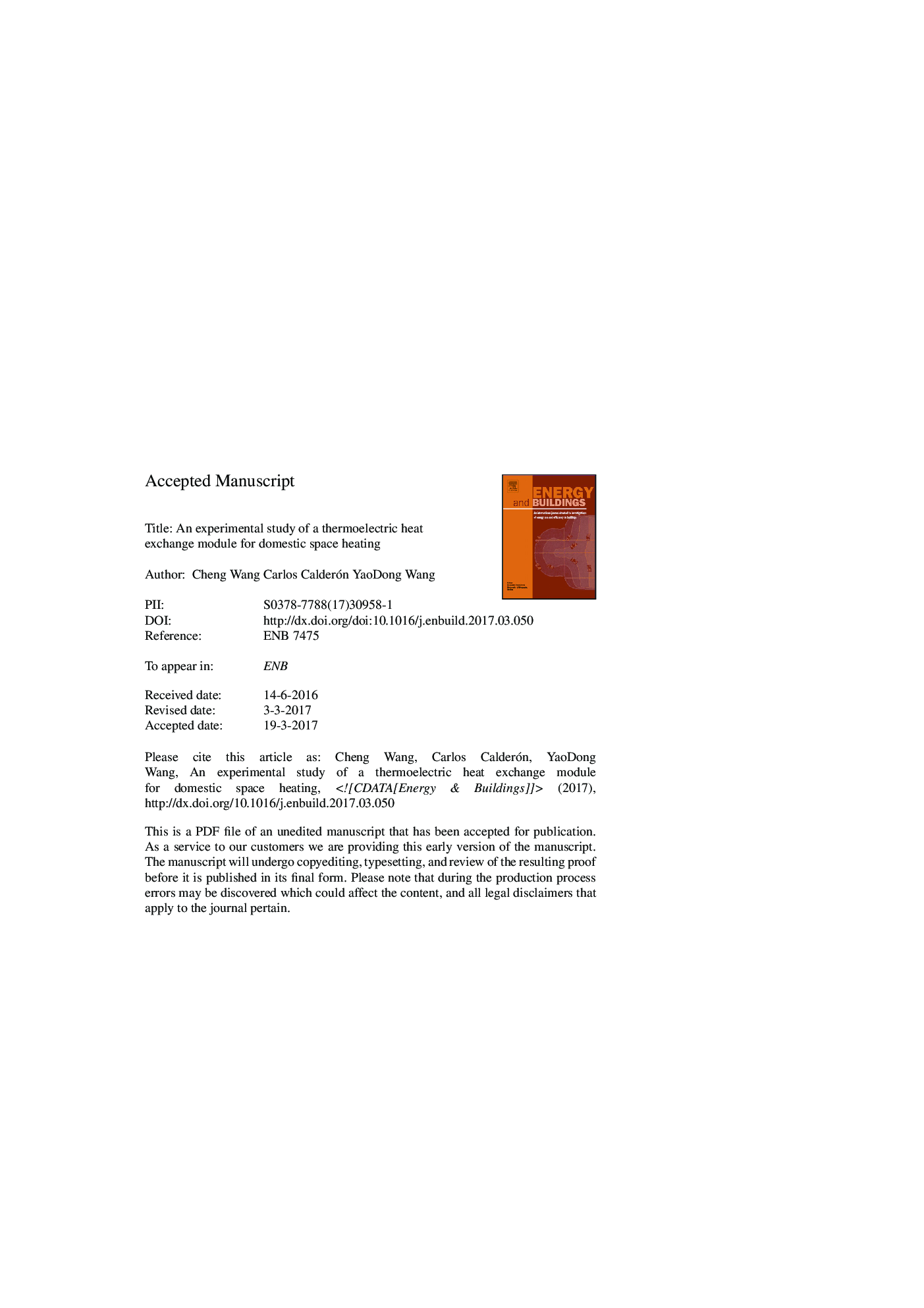| Article ID | Journal | Published Year | Pages | File Type |
|---|---|---|---|---|
| 4914153 | Energy and Buildings | 2017 | 40 Pages |
Abstract
The overall aim of this work is to develop a thermoelectric (TE) heating system powered by renewable energy that could compete, in the future, with current domestic heating system to reduce the greenhouse gas emissions. In this paper, our results suggest that TE modules can potentially be a solution for domestic indoor space heating whilst using renewable electricity. The test results of the space heating application of TE modules in a laboratory environment (19-21 °C) and outside courtyard low-temperature environment (1-5 °C) demonstrate that sufficient temperature difference can be achieved with TE modules so as to satisfy UK thermal comfort levels. The heating COP test results of TE modules also suggest an acceptable heat pump efficiency for the domestic heating application. Consequently and in order to ascertain its potential feasibility, a domestic heating application of TE modules to a Pre-1900s mid-terrace UK dwelling using hybrid renewable energy of solar energy and wind energy is presented. Our calculations suggest that a TE heating system, powered by local hybrid renewable energy and energy storage, can partly meet the domestic heating demand and could achieve a theoretical energy saving efficiency of 64.03% and reduce the CO2 emission of 4305.40 kg/year compared with using generic electricity radiator for the domestic space heating whilst the average heating COP remains at 1.8.
Related Topics
Physical Sciences and Engineering
Energy
Renewable Energy, Sustainability and the Environment
Authors
Cheng Wang, Carlos Calderón, YaoDong Wang,
